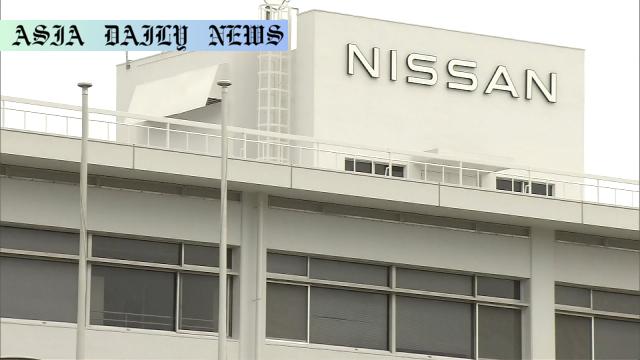Nissan reorganizes domestic production to address financial challenges by cutting costs and relocating operations.
Nissan plans to shut down two Japanese plants, citing financial struggles and the need for cost-cutting measures.
Production will be relocated to other facilities, with jobs being promised to be protected through transfers and reassignments.
Nissan’s restructuring efforts include cutting 20,000 jobs globally as it seeks to regain its growth trajectory.

The Hard Call: Nissan’s Decision to Shut Down Two Plants
Nissan, one of Japan’s leading automakers, announced a significant decision to end production at two of its domestic factories as part of a comprehensive measure to reduce costs and realign its focus. Nissan President and CEO Ivan Espinosa shared the announcement on Tuesday. The company has set a timeline for closure, with the Oppama Plant near Tokyo ceasing production by March 2028 and the Shonan Plant, operated by its subsidiary Nissan Shatai, ending operations by March 2027.
The decision, according to Espinosa, was a challenging yet necessary step for the struggling automaker to navigate difficult market conditions and return to a trajectory of growth. Recent sluggish sales figures, coupled with rising costs, have prompted Nissan to overhaul its domestic manufacturing strategy, consolidating operations to more efficiently leverage existing production resources. Production will now shift to facilities in Fukuoka, located in southwest Japan, as the company streamlines processes to cut expenses.
The Impact on Jobs and Employee Concerns
Nissan’s move to shutter factories has sparked concerns regarding job security among employees. Although the company has been vocal about its intention to protect the employment of workers at the Oppama Plant, the global restructuring effort carries a weightier implication. As part of a broader strategy, Nissan plans to cut 20,000 jobs across its group entities, signifying substantial layoffs in its workforce worldwide.
The company’s management assured stakeholders that worker transfers to other plants or roles within Nissan’s ecosystem would be prioritized. Similarly, the subsidiary Nissan Shatai emphasized its commitment to exploring all possibilities for preserving jobs. However, these assurances have done little to alleviate fears among the labor force, with unions raising objections to the decision and calling for continued negotiations to address long-term concerns over job retention and stability.
Exploring the Future of the Affected Plants
Beyond job ramifications, another pressing question relates to the future of the physical plants themselves. Espinosa hinted at a variety of potential options for the soon-to-be-defunct facilities, including selling off assets or negotiating with third-party buyers interested in acquiring the plants. Repurposing the sites for alternate industrial or commercial use could also be explored, although concrete plans remain unclear at this stage.
Nissan’s recalibration of its domestic strategy appears to reflect core challenges faced by the automotive industry at large, particularly in an era where market volatility, supply chain disruptions, and shifts toward electric vehicle manufacturing dominate industry headlines. The strategy aims to balance the need for financial health with flexibility in addressing evolving manufacturing requirements.
What Lies Ahead for Nissan’s Growth Journey
The closure of the Oppama and Shonan plants is part of Nissan’s strategic endeavor to recalibrate its priorities, streamline operations, and regain competitive positioning in global automotive markets. While the decision may appear drastic, experts argue it is aligned with a pragmatic outlook toward ensuring long-term sustainability. The relocation of production to Fukuoka underscores priority cost-efficiency measures.
Although the move has led to immediate concerns, including employee dissatisfaction and a sense of uncertainty, Nissan appears focused on pursuing an adaptable model that supports market and manufacturing trends. Analysts believe that post-restructuring, the automaker is likely to benefit from lowered operational costs, increased production efficiency, and a clarified focus on profitability.
Nissan’s efforts, though met with skepticism, emphasize how automakers must adopt bold measures to adapt in the face of consistently evolving market pressures.



Commentary
A Critical Moment for Nissan
Nissan’s recent announcement to shut down two major production facilities in Japan reveals a challenging moment for the automaker. While such decisions are never easy, Nissan’s leadership seems to have taken the pragmatic route in the face of financial hardships. Overcoming the obstacles of declining sales and a need for cost-cutting has clearly driven this decision, despite its significant implications for both workers and local economies.
The Impact on Worker Morale
From an employee’s perspective, closures of facilities are deeply unsettling. Job security has emerged as a pressing concern, amplified by Nissan’s earlier announcement to reduce 20,000 jobs globally. Though the company has made promises to protect employment through relocation and transfers, the reality of a shrinking workforce adds to the looming uncertainty among its loyal labor force. It raises the question of whether such assurances fully bridge the gap in easing anxieties or adequately addressing valid worker grievances.
Navigating Change with Resilience
This difficult restructuring decision highlights the broader complexities faced by the automotive industry. As companies adjust to diminished demand and huge costs in transitioning to electric vehicle technology, they are faced with tough calls about the future of traditional manufacturing processes. Nissan is clearly re-aligning itself to remain competitive, but with challenges comes an opportunity to redefine what resilience means for organizations in such rapidly shifting environments.
In the coming years, Nissan’s ability to transform its direction will likely serve as a benchmark for other companies navigating similarly turbulent waters. While drastic, this decision underscores the importance of adaptability and long-term strategic planning in an industry brimming with uncertainties.